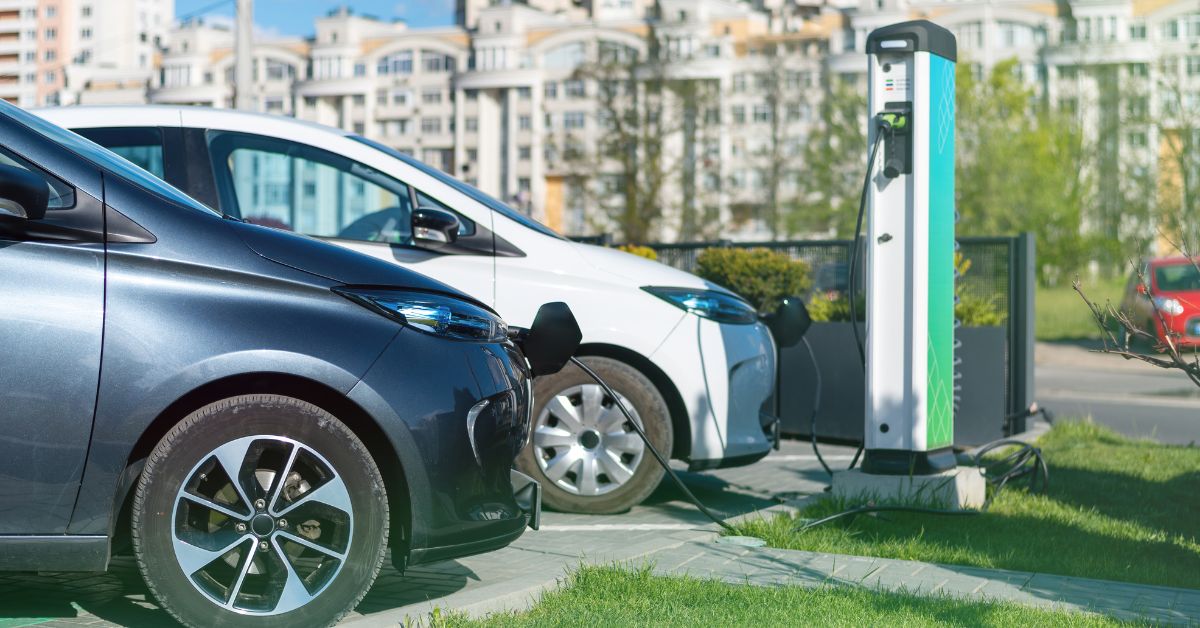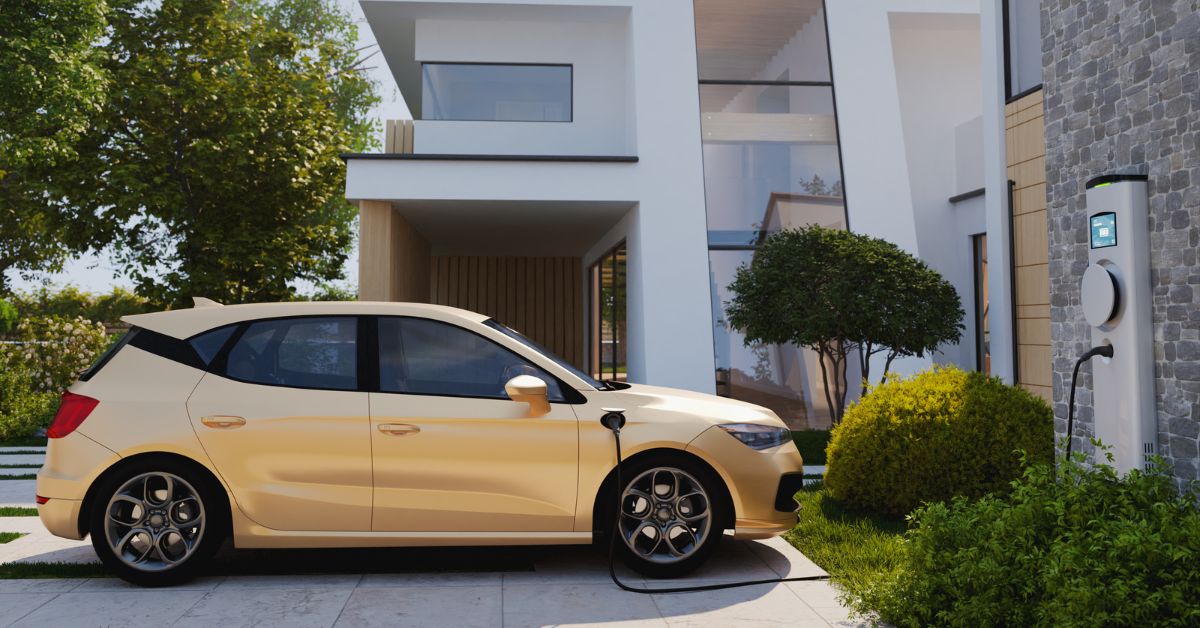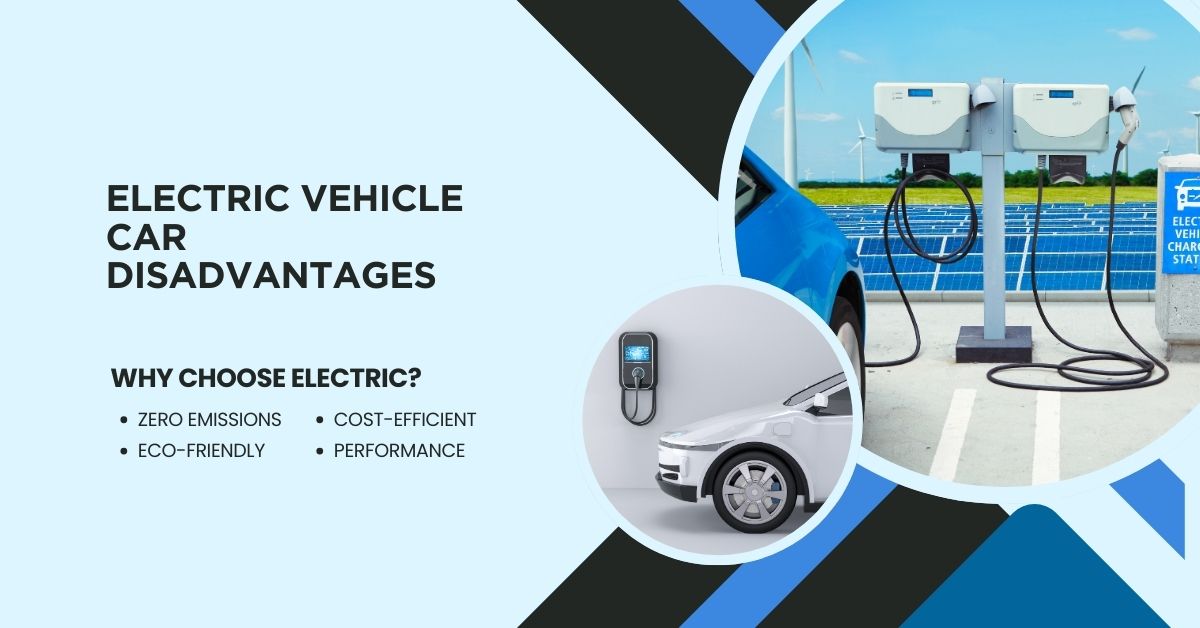Electric Vehicle Car Disadvantages
Know the details about Electric Vehicle Car Disadvantages, Electric vehicles (EVs) come with various benefits, but they also have some disadvantages. One significant drawback is the limited driving range compared to traditional gasoline cars, making long trips less convenient.
Charging infrastructure, although growing, is still sparse in many regions, leading to potential delays in charging. Charging times can also be long, especially without access to fast chargers. EV batteries degrade over time, reducing performance and range, and battery replacement can be costly. Additionally, EVs tend to have higher upfront costs, and extreme weather conditions can impact battery efficiency and driving range negatively.
Table of Contents
Electric Vehicle Car Disadvantages: Understanding the Challenges of EV Adoption
The rise of electric vehicles (EVs) has revolutionized the automotive industry, promising a cleaner, more sustainable future for personal and commercial transportation. Governments, environmental advocates, and automakers alike are pushing for the transition from traditional internal combustion engine (ICE) vehicles to electric ones, driven by the need to reduce greenhouse gas emissions, lower dependence on fossil fuels, and address the growing concerns about climate change.
However, while the benefits of electric vehicles are often touted, it’s essential to acknowledge that they are not without their disadvantages. The purpose of this article is to provide a comprehensive overview of the challenges, obstacles, and downsides associated with EV adoption. From issues related to cost and infrastructure to limitations in battery technology, we’ll explore the various disadvantages that consumers, governments, and automakers must consider as they accelerate the transition to electric mobility.
Higher Initial Purchase Cost
One of the most significant and widely recognized disadvantages of electric vehicles is their higher upfront cost compared to traditional gasoline-powered cars. While the long-term cost of ownership may be lower due to savings on fuel and maintenance, the initial sticker price for most electric cars remains a significant barrier for many consumers.

The cost of electric vehicles is largely driven by the price of the battery pack, which can make up 30-50% of the total cost of the vehicle. Although battery prices have been decreasing over time, they are still relatively high, especially for vehicles with larger ranges. For instance, a Tesla Model 3 can cost significantly more than a comparable gasoline-powered sedan from a mainstream brand like Honda or Toyota.
This higher upfront cost can be a deterrent for budget-conscious buyers, especially in regions where government incentives for EV purchases are limited or nonexistent. While some countries and states offer subsidies, tax credits, or rebates for electric vehicles, these incentives vary widely and may not be available to all consumers, further complicating the financial equation.
Limited Driving Range and Range Anxiety
One of the most frequently cited drawbacks of electric vehicles is their limited driving range compared to traditional gasoline-powered cars. Most modern EVs have ranges between 150 to 300 miles on a full charge, depending on the model and driving conditions. While this range is sufficient for daily commutes or short trips, it may not be practical for long-distance travel, especially in areas with inadequate charging infrastructure.
Range anxiety, the fear of running out of battery power before reaching a charging station, is a significant psychological hurdle for many potential EV buyers. Although advancements in battery technology are gradually increasing range, EV drivers must still plan their journeys more carefully than ICE vehicle owners. Long road trips may require multiple charging stops, which can be time-consuming and inconvenient.
Additionally, the actual driving range of an electric vehicle can vary based on several factors, including weather conditions, driving speed, and the use of climate control systems. In cold weather, for example, an EV’s range can drop significantly as the battery loses efficiency and energy is used to heat the cabin.
Limited Charging Infrastructure
While gas stations are ubiquitous, EV charging infrastructure is still in the early stages of development in many parts of the world. For drivers living in urban areas or along well-developed transportation corridors, finding a charging station may not be a significant issue. However, in rural areas or regions with limited investment in EV infrastructure, charging options can be scarce.
Even in areas with charging stations, the availability and reliability of these stations can vary. Some may be out of service, occupied, or located in inconvenient spots. Additionally, the time required to charge an EV is considerably longer than refueling a gasoline vehicle. While fast chargers can provide a substantial charge in 20-30 minutes, it may take several hours to fully charge an EV using standard Level 2 chargers.
The lack of a widespread and reliable charging network can be a major deterrent for potential EV buyers, especially those who do not have access to home charging options, such as apartment dwellers or people without a private driveway or garage.
Long Charging Times
Another significant disadvantage of electric vehicles is the amount of time required to recharge the battery. While advancements in charging technology have improved charging speeds, it still takes considerably longer to charge an EV compared to refueling a gasoline vehicle.
- Level 1 Charging: Using a standard household outlet (120 volts), a Level 1 charger can take up to 24 hours or more to fully charge an EV, making it impractical for most drivers.
- Level 2 Charging: Level 2 chargers, which use a 240-volt outlet, are faster and can fully charge an EV in 4 to 8 hours. These chargers are often installed in homes, workplaces, or public charging stations but still require significantly more time than filling up at a gas station.
- DC Fast Charging: Fast chargers can provide a significant charge in 20-30 minutes, but these chargers are not as widely available and can be expensive. Even with fast chargers, it’s still necessary to wait for a charge, which may not be ideal for drivers on tight schedules.
For people who frequently drive long distances, the wait time for charging can be frustrating and inconvenient. In comparison, filling up a gasoline-powered car takes only a few minutes, making ICE vehicles far more efficient for long road trips or continuous driving.
Battery Degradation Over Time
Like all rechargeable batteries, the lithium-ion batteries used in electric vehicles degrade over time. As the battery ages, its capacity diminishes, resulting in a reduction in the vehicle’s driving range. While most EV manufacturers offer warranties for their batteries (typically around 8 years or 100,000 miles), battery degradation is an inevitable part of owning an electric vehicle.
The rate of degradation depends on several factors, including driving habits, charging patterns, and environmental conditions. For example, frequent fast charging or exposure to extreme temperatures can accelerate battery wear. As the battery degrades, owners may need to replace it, which can be a costly and labor-intensive process. In some cases, the cost of replacing a battery pack can be a significant percentage of the vehicle’s original value, making it financially impractical to keep the car on the road.
While battery technology is improving, and manufacturers are working to extend battery life, this remains a concern for long-term EV ownership.
Environmental Impact of Battery Production
Electric vehicles are often marketed as an environmentally friendly alternative to traditional gasoline cars, but it’s important to recognize that they are not entirely without environmental costs. One of the biggest environmental disadvantages of EVs is the impact of battery production, particularly the extraction and processing of the raw materials required to manufacture lithium-ion batteries.
EV batteries rely on critical minerals like lithium, cobalt, nickel, and rare earth elements, which are often mined in regions with poor environmental and labor practices. The extraction of these minerals can result in habitat destruction, water contamination, and significant carbon emissions. Moreover, the energy-intensive processes used to refine and manufacture battery components contribute to the overall environmental footprint of electric vehicles.
While the environmental impact of driving an EV is generally lower than that of a gasoline car over its lifetime, the production of batteries adds complexity to the equation. In regions where electricity is generated from fossil fuels, the benefits of EVs in terms of reduced emissions are also diminished.
Limited Model Availability and Variety
Although the number of electric vehicle models on the market is growing, the variety of available options is still relatively limited compared to traditional gasoline-powered cars. Many automakers are focusing on producing electric versions of sedans, compact cars, and SUVs, but certain segments, such as pickup trucks, minivans, and luxury cars, have fewer electric options.
For consumers looking for specific features or vehicle types, the lack of variety in EV models can be a drawback. Additionally, some EVs are only available in certain regions or are produced in limited quantities, further restricting consumer choice.
While this is expected to change as more automakers invest in electric vehicle development, for now, the limited range of models can be a disadvantage for buyers seeking specific vehicle characteristics.
Limited Towing and Hauling Capabilities
One of the less-discussed disadvantages of electric vehicles is their limited towing and hauling capacity compared to gasoline-powered vehicles. While some electric trucks and SUVs are designed with towing in mind, the overall performance of EVs when it comes to towing heavy loads is still inferior to that of traditional ICE vehicles.
Towing can significantly reduce an EV’s range, as the extra weight and drag require more energy to move the vehicle. This can make electric vehicles less practical for people who frequently tow trailers, boats, or other heavy loads, particularly over long distances.
For now, gasoline-powered trucks and SUVs remain the preferred choice for consumers who need reliable towing capabilities. As battery technology improves, electric trucks may eventually become more competitive in this area, but it remains a limitation for the time being.
Lack of Repair and Maintenance Infrastructure
While electric vehicles are generally considered to require less maintenance than traditional cars (due to fewer moving parts and no need for oil changes), they do have their own unique maintenance and repair needs. One significant disadvantage for EV owners is the current lack of widespread repair and maintenance infrastructure, particularly outside of major urban centers.

Many traditional mechanics may not be equipped or trained to service electric vehicles, and specialized EV repair shops can be hard to find. Additionally, the proprietary nature of some EV components (especially for brands like Tesla) means that owners may need to rely on the manufacturer for repairs, which can result in longer wait times and higher costs.
This lack of maintenance infrastructure is a challenge for widespread EV adoption, as consumers may be hesitant to purchase a vehicle they cannot easily service or repair.
Uncertain Resale Value
As electric vehicles are still relatively new to the market, there is uncertainty surrounding their long-term resale value. While some EVs, like Tesla models, have shown strong resale value, others have depreciated more rapidly than traditional gasoline-powered cars.
Several factors contribute to this uncertainty, including concerns about battery degradation, the rapid pace of technological advancements, and the availability of government incentives that may artificially inflate initial purchase prices. As the used EV market matures, it will become clearer how well electric vehicles hold their value over time, but for now, this remains a concern for potential buyers.
Heavy Reliance on Government Incentives
The adoption of electric vehicles has been heavily supported by government policies and incentives in many countries. These incentives can take the form of tax credits, rebates, and subsidies for EV purchases, as well as investments in charging infrastructure. However, the availability and size of these incentives vary widely from one region to another, and there is no guarantee that they will continue indefinitely.
In some regions, the removal or reduction of government incentives has led to a sharp decline in EV sales, highlighting the industry’s reliance on such support. For example, when the U.S. federal EV tax credit phases out for a particular manufacturer (once they sell a certain number of vehicles), their sales can dip as the financial incentive is no longer available.
This reliance on government support creates uncertainty for both automakers and consumers, as future policies could significantly impact the cost and availability of electric vehicles.
Challenges in Recycling and Disposal of Batteries
As the number of electric vehicles on the road increases, so too will the demand for proper recycling and disposal of EV batteries. While lithium-ion batteries are recyclable, the process is complex and costly, and the infrastructure for large-scale battery recycling is still underdeveloped.

Improper disposal of EV batteries can result in environmental hazards, as the chemicals and materials used in batteries can be toxic and harmful if not handled correctly. There is also a risk of fire or explosion during the recycling process, further complicating efforts to develop a safe and efficient recycling system.
As the electric vehicle market grows, finding sustainable solutions for battery recycling and disposal will be critical to minimizing the environmental impact of EVs and ensuring that the benefits of clean transportation are not offset by waste management challenges.
FAQs About Electric Vehicle Car Disadvantages
Q1. What are the limitations of an electric vehicle’s driving range?
Electric vehicles typically have a shorter driving range than petrol or diesel cars. Most EVs offer ranges between 100 to 300 miles on a full charge, which may not be sufficient for long trips without planning multiple charging stops.
Q2. Why are electric vehicles generally more expensive to buy than petrol cars?
The initial purchase cost of EVs is higher, mainly due to the expensive battery technology. Though prices are decreasing, the upfront cost can still be prohibitive for many consumers compared to traditional gasoline cars.
Q3. How long does it take to charge an electric vehicle?
Charging times can vary significantly based on the type of charger used. Fast chargers can recharge an EV in 30 minutes to an hour, while standard home chargers can take several hours, sometimes up to 12 or more.
Q4. Are electric vehicles practical in cold climates?
Electric vehicles tend to lose range in colder weather as batteries are less efficient in low temperatures. Heating the cabin also drains the battery, further reducing the driving range in winter conditions.
Q5. What is the current availability of charging stations?
Although the charging infrastructure is improving, there is still limited availability in certain regions, particularly rural areas. Finding a charging station in these places can be challenging, which might discourage potential EV owners.
Q6. What happens to the battery after it wears out?
The lifespan of an EV battery is typically between 8 and 15 years, but replacing it can be expensive. Additionally, concerns about battery recycling and the environmental impact of disposing of old batteries still exist.
Q7. How do electric vehicles perform for long-distance travel?
Long-distance travel in an electric vehicle can be less convenient due to range limitations and the need to plan for charging stops, which can be more time-consuming compared to refueling a petrol car.
Q8. Are electric vehicles cost-effective in the long run?
While EVs may have lower operating and maintenance costs, the high initial purchase price and potential battery replacement costs can offset some of the savings, making them less economical over time for some users.
Q9. Do electric vehicles have limited towing capacity?
Electric vehicles generally have lower towing capacities compared to their gasoline counterparts. Towing heavy loads can drastically reduce the driving range, which may be a disadvantage for those who require vehicles for heavy-duty tasks.
Q10. What are the environmental concerns related to EV batteries?
The production and disposal of lithium-ion batteries used in electric vehicles pose environmental challenges. Mining raw materials like lithium, cobalt, and nickel can be harmful to the environment, and improper disposal of used batteries can lead to toxic waste issues.
Electric vehicles offer many advantages, including reduced emissions, lower fuel costs, and a quieter, smoother driving experience. However, it’s essential to recognize that EVs have disadvantages. High upfront costs, limited range, inadequate charging infrastructure, and concerns about battery life and recycling are just some of the challenges facing the EV industry.
As technology improves and governments invest in supporting infrastructure, many of these disadvantages may be mitigated in the future. However, for now, potential buyers and policymakers must weigh these challenges carefully when considering the widespread adoption of electric vehicles. Ultimately, the path to a fully electric future will require addressing these obstacles while continuing to push for cleaner, more sustainable transportation options.
Click here to learn more about Electric Vehicle Car Disadvantages
Click here to learn more about Electric Vehicle Car Advantages
